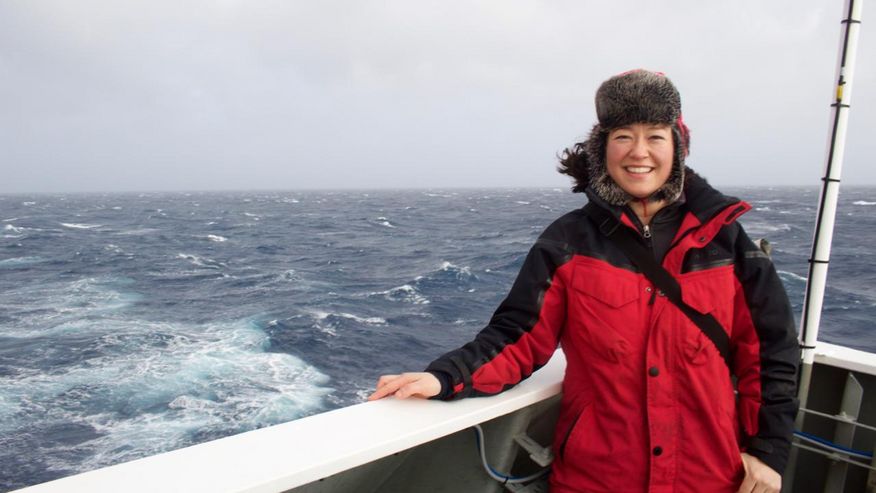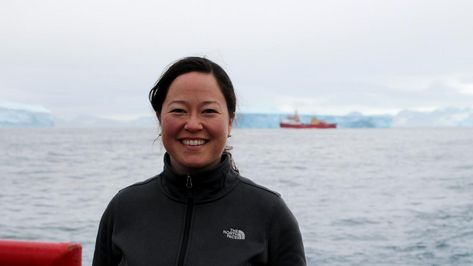The circulation pump in the Atlantic
Dr. Frajka-Williams loves to be at sea. She originally studied mathematics but oceanography is her passion. "It is a fantastic opportunity to study nature using mathematics and physics, and be on an adventure at the same time," she says. Frajka-Williams spends part of most years on board research vessels collecting data.

She is particularly interested in the system of ocean currents that stretches from the tip of South Africa to Greenland which keeps the vast water masses of the Atlantic in perpetual circulation. This "great ocean conveyor" circulation system known as Atlantic Meridional Overturning Circulation (AMOC) transports surface heat from the Tropics to the North where it warms Northwest Europe. At the same time, in the high northern latitudes, dense cold water sinks and flows back South at depths of several thousand metres.
Climate researchers have thought for some time that this system could be unstable. It halted a number of times during the last ice age, and model calculations indicate that global warming could also weaken it. Since 2004, British, American and German researchers have been investigating what actually happens in the Atlantic in the RAPID-AMOC project. They set up an array of instruments moored across the Atlantic at 26.5°N between Florida and Morocco. Sensors at over a dozen locations and at various depths monitor values such as temperature, salinity and density of the water. "Using this data, we can calculate the velocity of the current and the amount of water transported," explains Frajka-Williams, who was one of the project scientists for several years.

The circulation of the oceans is the specialist subject of Dr. Eleanor Frajka-Williams. As an Associate Professor at the University of Southampton, she is investigating whether climate change is weakening the ocean overturning circulation (including the Gulf Stream) in the Atlantic. In 2017 she was honoured as the outstanding early career scientist in her field by the European Geosciences Union.
One surprising finding from RAPID is that there was a marked decrease of almost 20 percent in the amount of water circulated in the Atlantic between 2004 and 2014. "However, it was unclear whether the measurements were representative of the Atlantic as a whole or are just a local anomaly," says Frajka-Williams. In order to obtain a more complete picture, the oceanographer has turned to using satellite measurements of sea levels. She developed a method for determining the amount of water transported in the Atlantic from this data and was thus able to show broad spatial coherence and to extrapolate transport estimates back to 1993.
Further measuring arrays are monitoring the Atlantic at 16°N as well as in the Labrador Sea and between Greenland and Scotland. "We now have several of indicators that point to a slow-down in the circulation as a whole," she says. It is not yet possible to tell from the data whether this is part of a long-term trend or a natural variation. For this reason the RAPID measurements will continue at least until 2020.
Dr. Frajka-Williams is meanwhile studying the other end of the conveyor belt. In early 2017 she was in the Antarctic on board the research vessel James Clark Ross to find out how extremely dense and cold bottom water originates there - another factor driving the global conveyor.
Further information:


